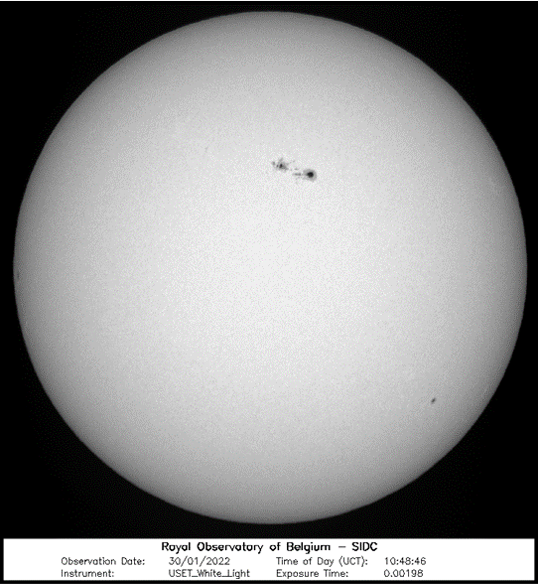The Uccle Solar Equatorial Table (USET) of the Royal Observatory of Belgium (ROB) contains 4 telescopes to observe the Sun in the visible light: two for white light observations, one for the blue portion of the spectrum (CaII K), and one for the red portion (H-alpha, 656.28 nm). During the early afternoon hours of 14 January, solar observers at the ROB managed to image a filament eruption in H-alpha, which was associated with a long duration C4 flare (GOES, soft x-rays). A filament is a cloud of ionized particles (plasma) above the solar surface squeezed between magnetic regions of opposite polarity. Being cooler and denser than the plasma underneath and their surroundings, it appears as a dark line when seen on the solar disk using special filters such as the H-alpha filter. When the magnetic fields holding the plasma become unstable, the filament may erupt and be ejected into space.
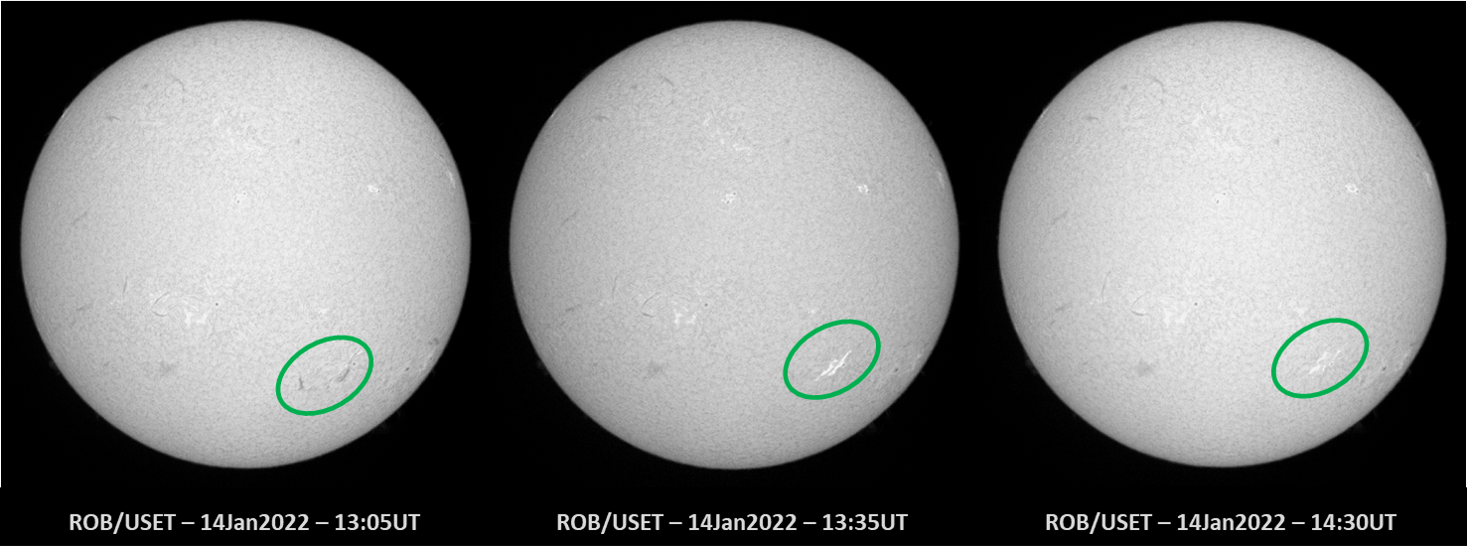
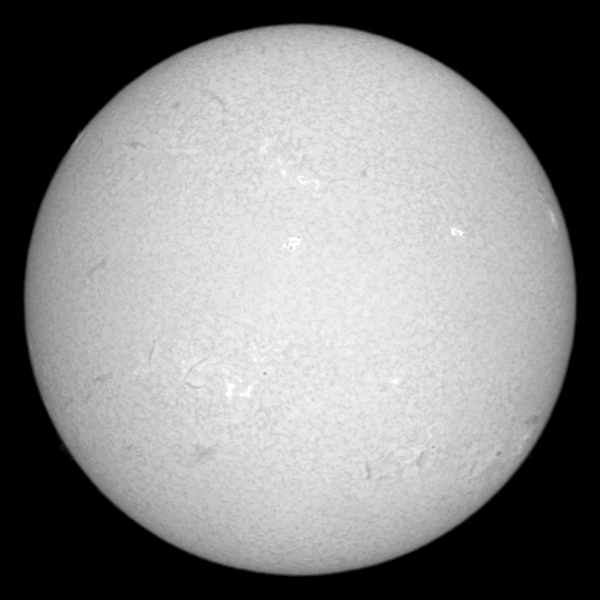
Credits: ROB/USET (http://www.sidc.be/uset/)
The annotated imagery above shows the rising filament at the beginning of the eruption (13:05UT), the eruption itself (13:35UT), and the area after the eruption (14:30UT) when the filament was fully gone. The movie runs from 13:00 till 13:30UT, with a change from 20 to 10 seconds in image cadence at 13:20UT. The clip (middle image) shows very well the development of double ribbons (the two bright more-or-less parallel lines), a tell-tale sign that magnetic reconnection has taken place and particles are accelerated to both sides of the magnetic neutral line, which marks the original location of the erupted filament. The eruption was also observed by the GONG H-alpha network (clip), as well as in extreme ultraviolet (EUV) by the fleet of solar satellites, including Solar Orbiter though it was trailing Earth by about 15 degrees. That's the reason why the eruption appears to be closer to the west limb ("to the right") than in the earth-based imagery. These images clearly show the ejection of plasma into space (annotated SolO/FSI 174 image underneath), but the associated coronal mass ejection delivered only a glancing blow to the earth-environment on 17 January, resulting in a puny geomagnetic storm (Kp=5).
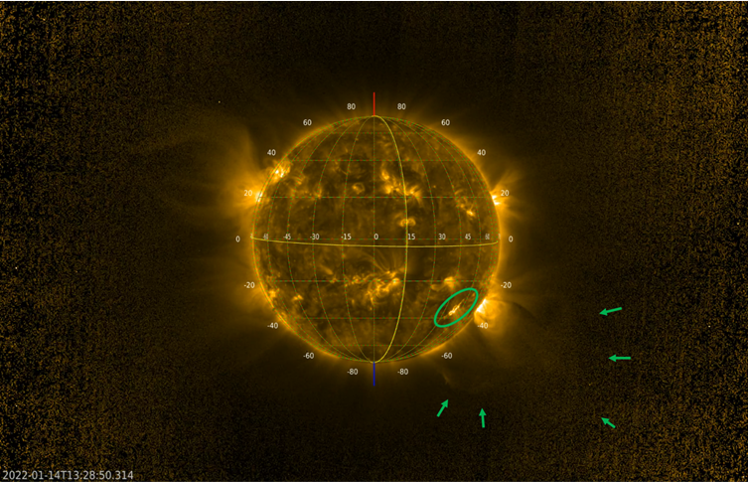
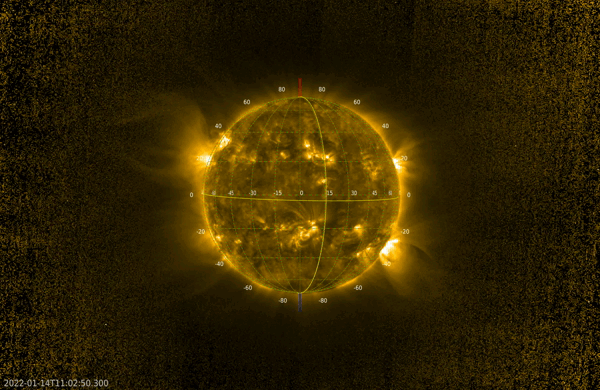
Credits: the SolO/EUI team (http://www.sidc.be/EUI/intro)
The USET solar telescopes were also at the appointment last week when a big sunspot group developed on disk in just a few days. Despite all the cloudy days in January, USET solar observers managed to snap this white light picture of the Sun showing NOAA 2936 on 30 January (underneath). Using solar eclipse glasses, several observers reported the sunspot group visible with the naked eye on that day. Despite its size, the group's magnetic configuration was relatively simple and resulted in mostly C-class flares and only 1 M-class event so far. More on this active region in a future news item.
